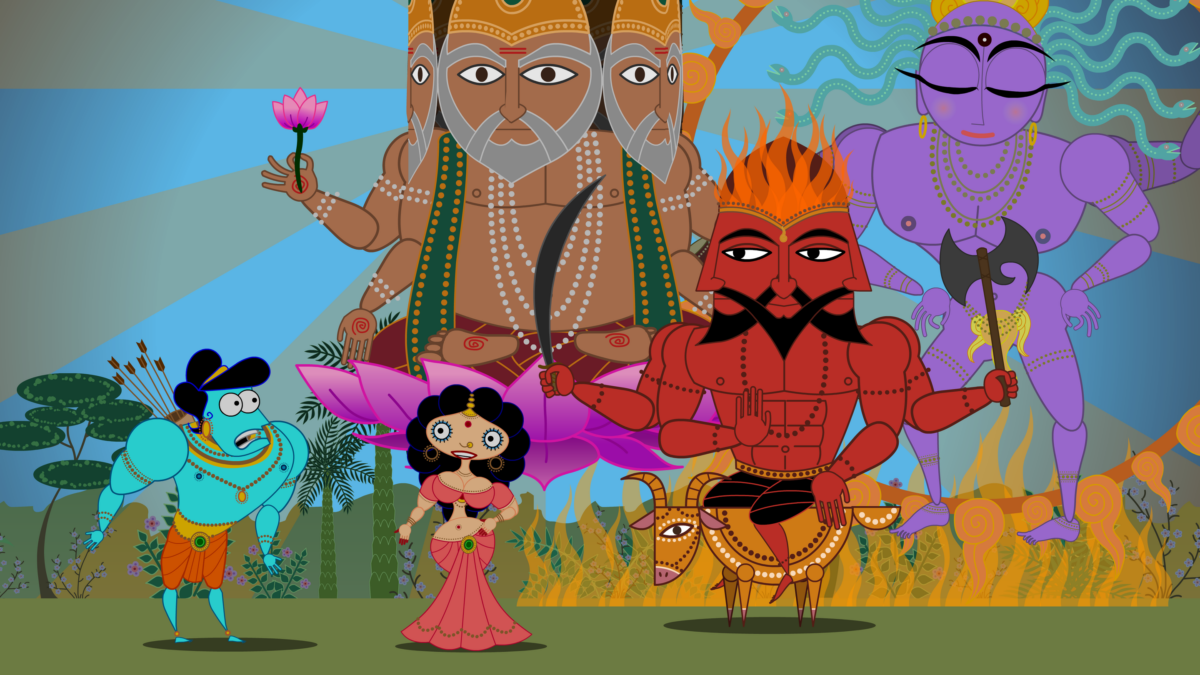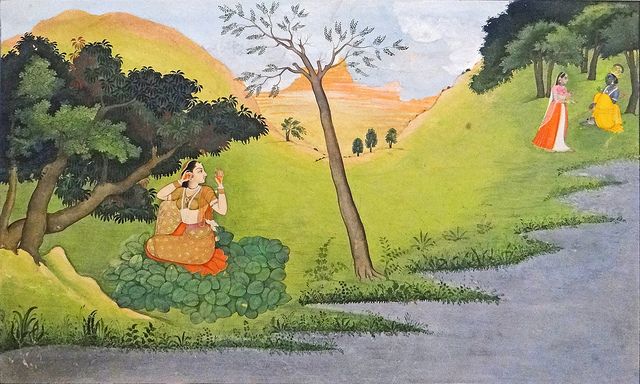
Sita Sings the Blues is a film which has raised the eyebrows of many Hindus worldwide. For nearly a billion Hindus around the world, The Ramayana is a living epic, the spiritual tenets of which form an unshakable cornerstone of the faith. The editorial and artistic liberties taken in Sita Sings the Blues are unfortunately both sentimentally and spiritually offensive to many of the Hindu faith. Here are the reasons why:
1) The comparison of Lord Rama and Sita living as a typical unmarried, New York couple is an interpretation that is culturally insensitive and disrespectful. Further, the depiction of Lord Rama as the “jerk boyfriend” and Sita as the “jilted girlfriend” is not only deeply offensive, but frankly wrong. Please recall that Sita was kidnapped and taken to Ravana’s kingdom through trickery and she remained there in desolation awaiting her husband. This is a far cry from a modern boyfriend-girlfriend breakup. Rama and Sita were the most devout of lovers, married not only by choice, but also by a spiritual destiny. For Hindus, Rama and Sita were, in fact, the very incarnations of God and Goddess on earth. Rather than the callous man who tosses out his girlfriend in modern day Thiruvananthapuram, Rama lived in an age dictated by his dharma – a very complex set of guidelines that were meant to create harmony in his kingdom. Rama was born to be the living incarnation of dharma, therefore lived his life as a prince and king in order to achieve the greatest good. The adversities that Rama and Sita faced illustrate the way in which we too faced obstacles in our day to day lives and the difficult decisions we have to make oftentimes, in accordance with dharma, having to sacrifice our own happiness for the greater good. The modern-day boyfriend in the story, on the other hand, was only motivated by his own selfishness.
2) We were also dismayed by the watering down of the deep philosophical symbolism of the lives of both Sita and Rama. Sita was a complex woman, who was both ahead of her time and understood to represent the purity of the Mother Goddess. When she was taken by Ravana — she was not some poor waif who was simply lifted and carried away. She fought with all her strength to preserve her honor. In this respect, she was not just a weeping lost soul, devoted to her husband, crying every day, but a fierce, strong-willed woman whose sheer will and piety prevented any other man from being able to touch her. Many accounts relay that Ravana was unable to just “pick up Sita ” and fly away, but rather, he had to gather the earth beneath her in order to carry her because he would otherwise be burned by her touch. Sita’s refusal to fly back to Rama with Hanuman was not ego-driven, but rather demonstrated her patience and sacrifice to exonerate her husband’s honor. This is well expounded in Sundara Kundam, a spiritual conversation between Sita and Hanuman, which was neglected in the film.
3) Rama was not some thoughtless, abusive husband who lit his wife on fire and then later kicked her out of the house. This was a man, believed to be an incarnation of God, who time and time again showed himself to be the living dharma by giving up his personal happiness for the greater good. When he found that Ravana (truthfully a good king, just as depicted by the shadow puppets) had abducted Sita, he gave him every opportunity to return her to her rightful home. When he was pushed to battle, he did so with the greatest reluctance, as he had exhausted all options. Rama and Sita did not approach the agnipariksha (fire test) with such callous disregard. Rama was once again struggling between his dharma to his kingdom and his dharma to and love for his wife. He was heartbroken to make that choice, and in the end, set Sita free and it was Sita herself who proved her purity. The chapter at the very end of Uttara Kanda is likewise poorly represented in the film. Although it is accepted that Rama did send Sita to the forest after some denizens of Ayodhya continued to question Sita’s honor during her incarceration–even after the agnipariksha, he once again did this with a heavy heart and spent the years that followed grief-stricken, and alone. He was not using the peoples’ voice as an excuse to ditch his wife. The law of his land was simple: a king had to rule and a suspect king was a useless king. Fair governance was Rama’s foremost concern, and for this, he gave up his deepest love — his greatest happiness. It is shorthsighted to paint him as an arrogant man who was looking for the quickest way out. That the harsh moralism that constrained his actions seems unapt today is another matter, but Rama abided by the dharmic ideals of a regent–whatever the cost.
In summation, although the film had interesting animation and caricatures, the content is both incorrect and offensive. We honor our epics the same way as Christians revere the Bible, Jews the Talmud, and Muslims the Quran. Although several Hindus were involved with the making of the film, no senior Hindu experts on the Ramayana were consulted with regards to the film, and therefore does not exonerate the film of its culturally insensitive messages.








































